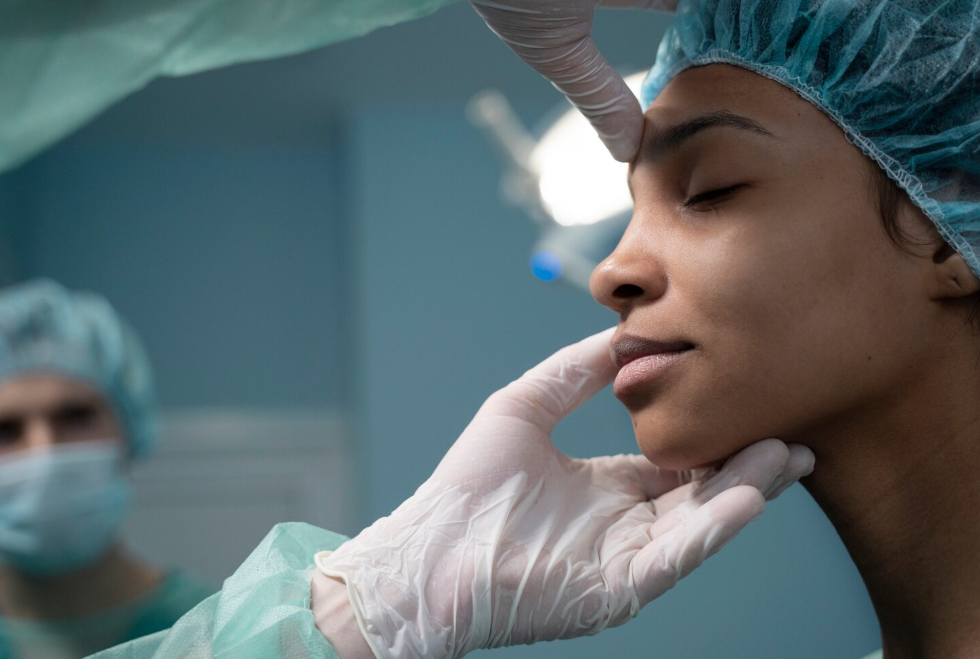Treatment Overview
Mixed-ethnicity rhinoplasty is a highly specialized procedure tailored for patients with diverse ethnic backgrounds. Unlike single-ethnicity rhinoplasty, where nasal features often follow a predictable pattern, mixed-ethnicity noses may combine characteristics such as a wide nasal base, high bridge, bulbous tip, thick skin, or asymmetry.
In Korea, surgeons are renowned for their advanced techniques and artistic precision in handling such complex cases. They focus on harmonizing the nose with the patient’s unique facial structure, ensuring results that enhance beauty while preserving cultural identity.
Purpose & Benefits
The main purpose of mixed-ethnicity rhinoplasty is to refine and balance nasal features that blend traits from multiple ethnic backgrounds. Benefits include:
- Customized surgical plans tailored to unique anatomy.
- Improved nasal harmony while respecting multicultural heritage.
- Correction of asymmetry or irregularities caused by mixed traits.
- Enhanced nasal function alongside aesthetics.
- Long-lasting, natural results with structural stability.
Ideal Candidates
Mixed-ethnicity rhinoplasty in Korea is suitable for individuals who:
- Have diverse ethnic backgrounds with complex nasal features.
- Seek balanced results that respect both sides of their heritage.
- May have asymmetry or unique structural challenges.
- Want a natural nose shape that complements overall facial harmony.
- Are healthy with realistic expectations about outcomes.
Possible Risks & Complications
While generally safe in the hands of Korean experts, risks include:
- Swelling and bruising in the early recovery phase.
- Breathing difficulties if nasal support is compromised.
- Over- or under-correction of features.
- Scar tissue formation (especially with thick skin).
- Rare need for revision surgery if results heal asymmetrically.
Surgical Techniques Used
Korean surgeons use advanced, highly customized approaches for mixed-ethnicity noses:
- 3D Morphing & Simulation: To design a nose that balances diverse traits.
- Bridge Augmentation or Reduction: Adjusting the height of the nasal dorsum to achieve harmony.
- Tip Refinement: Sculpting cartilage for more definition and proportionality.
- Alar Base Adjustment: Narrowing wide nostrils while keeping a natural look.
- Cartilage Grafting: Using septal, ear, or rib cartilage for stable structure and long-term results.
- Functional Corrections: Septoplasty or turbinoplasty if breathing issues exist.
Recovery & Aftercare
- Swelling & Bruising: Peaks in the first week, improves within 10–14 days.
- Splints & Stitches: Splints removed within 7–10 days; internal sutures dissolve naturally.
- Downtime: Patients usually resume normal activities within 10–14 days.
- Final Results: Initial refinement seen in 2–3 months; full healing within 9–12 months.
- Korean Aftercare: Clinics provide LED therapy, scar prevention, swelling reduction treatments, and specialized foreign-patient care.
Results & Longevity
Mixed-ethnicity rhinoplasty in Korea offers long-lasting, natural outcomes. Surgeons focus on structural reinforcement, meaning results remain stable over time. The approach ensures aesthetic refinement while preserving each patient’s unique identity.
Treatment Process in Korea
1. Consultation
- 3D scanning and digital morphing to design balanced outcomes.
- Detailed discussion of heritage, preferences, and nasal anatomy.
2. Pre-Surgery Care
- Health evaluation and nasal function tests.
- Personalized surgical plan emphasizing natural harmony.
3. Surgery
- General anesthesia or sedation used.
- Duration: 2–4 hours, depending on complexity.
- Combination of structural, functional, and aesthetic adjustments performed.
4. Immediate Post-Surgery Care
- Monitoring in recovery rooms.
- Splints applied for protection.
5. Follow-Up & Aftercare
- Regular post-op checkups.
- Scar prevention, anti-swelling therapy, and massage treatments provided.
- International patients receive interpreter services, transport, and concierge aftercare.
Why Korea?
- Artistic Precision: Korean surgeons excel in balancing multicultural features.
- Advanced Techniques: Structural grafting ensures stable, natural outcomes.
- Global Hub: Korea is a leader in ethnic and revision rhinoplasty worldwide.
- Comprehensive Support: Clinics provide tailored services for foreign patients, including medical tourism programs.
Cost Range
The cost of mixed-ethnicity rhinoplasty in Korea varies based on complexity and surgeon expertise.
- General Price Range: ₩8,000,000 – ₩18,000,000 KRW (approx. $6,400 – $14,500 USD).
- Basic Packages Include: Surgery, anesthesia, surgeon’s fee, and follow-ups.
- Premium Packages May Include:
- 3D imaging & personalized planning
- Rib cartilage grafting if required
- Luxury recovery suites
- Extended scar care & LED therapies
- Interpreter and tourism support
Popular Clinics
- Banobagi Plastic Surgery (Seoul): Experts in complex and multicultural cases.
- ID Hospital (Seoul): Korea’s largest cosmetic hospital, popular among international patients.
- JW Plastic Surgery Clinic: Known for structural grafting and natural results.
- View Plastic Surgery Clinic: Specializes in ethnic and mixed-ethnic rhinoplasty.
- MINE Plastic Surgery Clinic: Focuses on subtle refinements with long-ter




